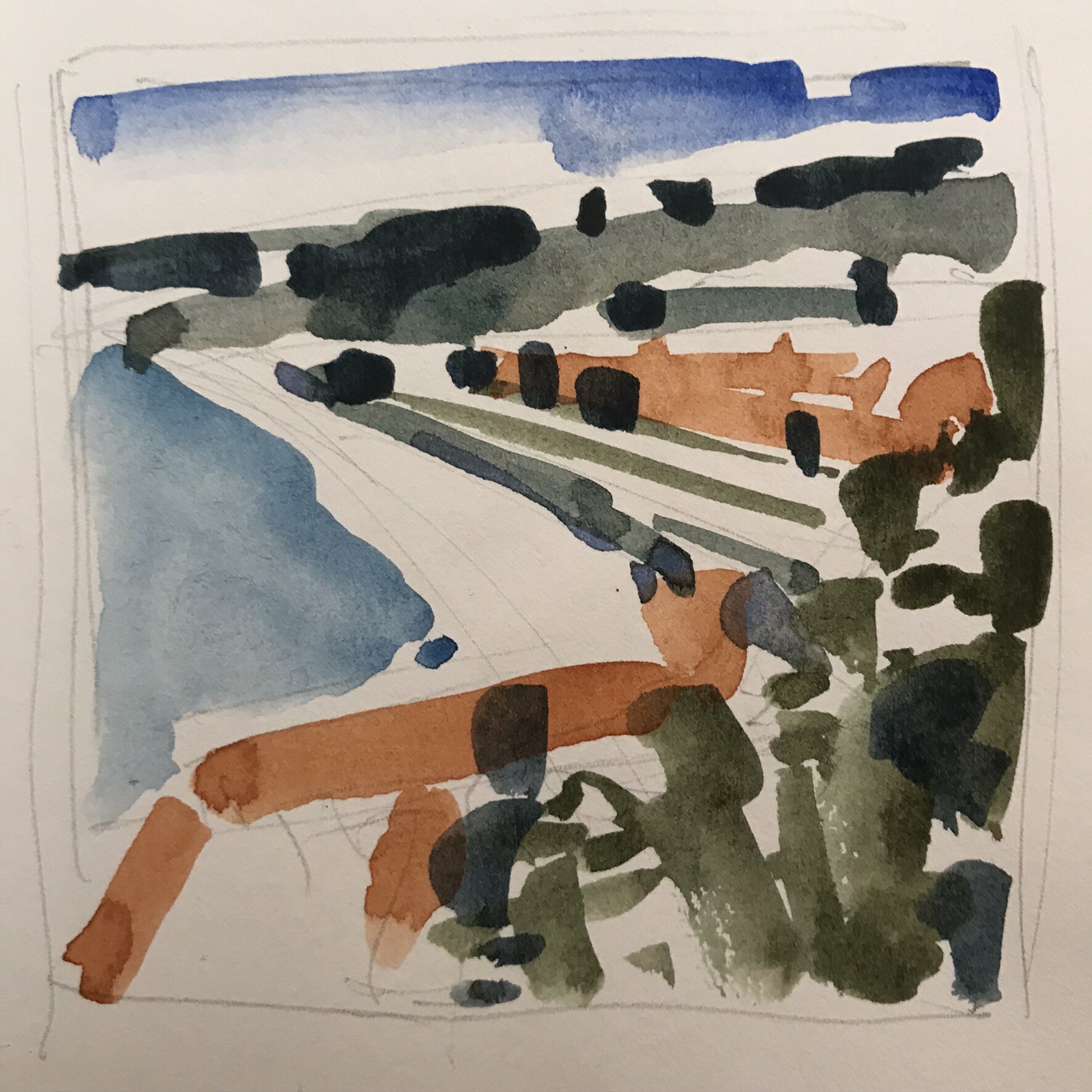My focus as an artist has always been painting. However, during my years of teaching in high school, middle school, and college, I developed many exercises, assigned year after year, introducing beginning classes to drawing. Personally, I drew when I was puzzling out a new subject, constructing a composition for a painting, or working outside.
That changed this year. I retired from teaching and had more time for making art, and for playing around with an idea before starting a painting. I began to appreciate my drawing as work that stands alone, and does not rely on a painting to give it value. And, after all those years of demonstrating and talking about making marks in my classroom, I have embraced those lessons myself, and transport my work easily into their language.
I wrote an earlier post about Drawing in the Desert
(
/ninajerome/2016/03/drawing-in-desert.html) in which I described exploring unfamiliar landscape in Tucson, Arizona. Again, during my stay on Great Cranberry Island with the Heliker-LaHotan Foundation, drawing was a primary part of the process. I drew every day, sometimes in preparation for a painting, but often to identify my interests or to mark my presence in the environment, a kind of conversation with the landscape.
I drew from my studio - from the windows or in the immediate area.
Tree at the Pool, 11x14, charcoal
Fog in the Cove, gouache, 5x8
Morning Fog, gouache, 8x10
I drew as an activity of recording what I saw as I walked along the shore on Long Point or at the south end of the island.
Beach at Long Point, charcoal, 9x12
Long Point, High Tide in Fog, water soluble graphite, 8x10
The View from Long Point, 9x12, charcoal
Toward Dead Man's Point, charcoal, 9x12
I drew both the land along the shoreline and the incoming tide, curious about how to capture the movement of the water as it coursed into the area of the pool and crept closer to the shore. Although there are paintings related to some, I consider the drawings to have their own identity.
Incoming Tide on Long Point, charcoal, 9x12
The work that most connected me to the drawing process were the pieces that I made on the Back Shore, a place I returned to many times to observe the chaotic jumble of rocks beside the sea.
Back Shore 9/25, graphite on yupo, 11x14
Back Shore 9/25.2, graphite on yupo, 11x14
Back Shore 9/28, graphite on yupo, 11x14
Back Shore 9/28.2, graphite on yupo, 11x14
Each day when I returned to the studio, I hung the work completed that day. Gradually, the wall filled with drawings; drawings that I considered to stand on their own as a record of my curiosity as I explored the island.
Studio wall in LaHotan Studio, varied materials
Studio wall, water soluble graphite on yupo



































































































































































































